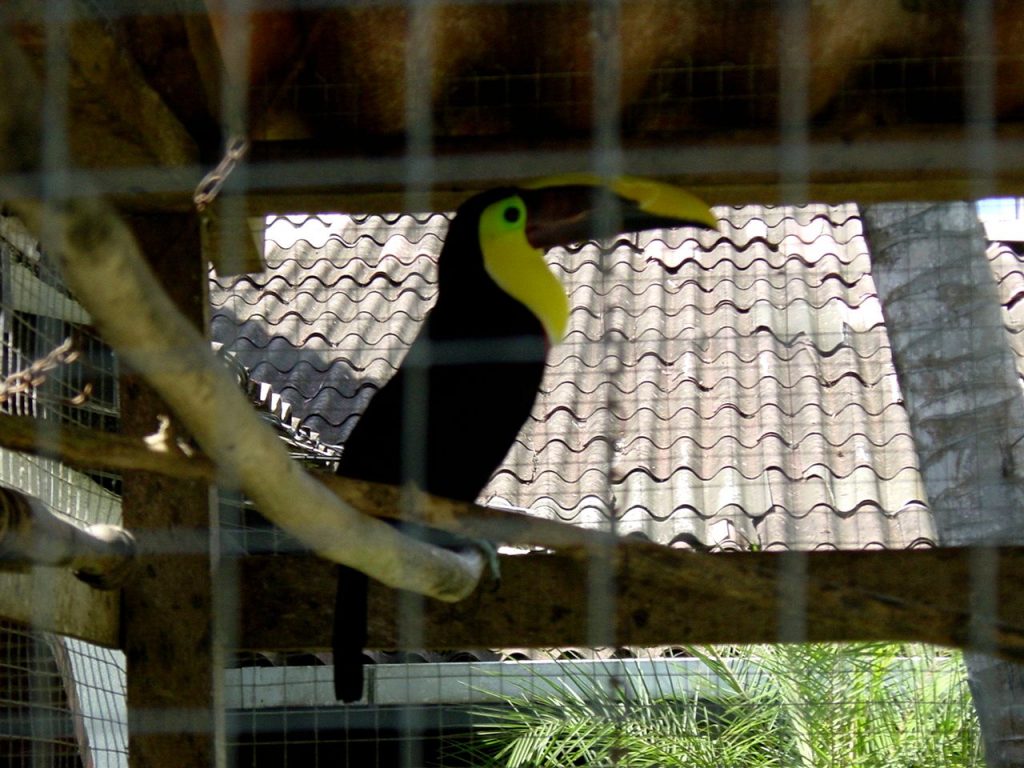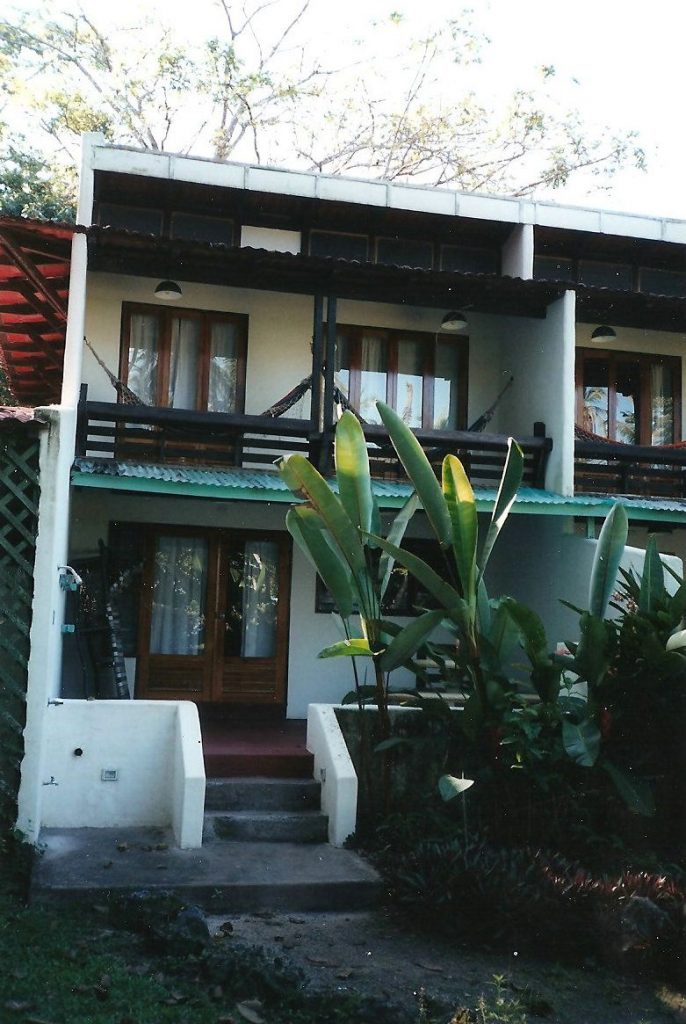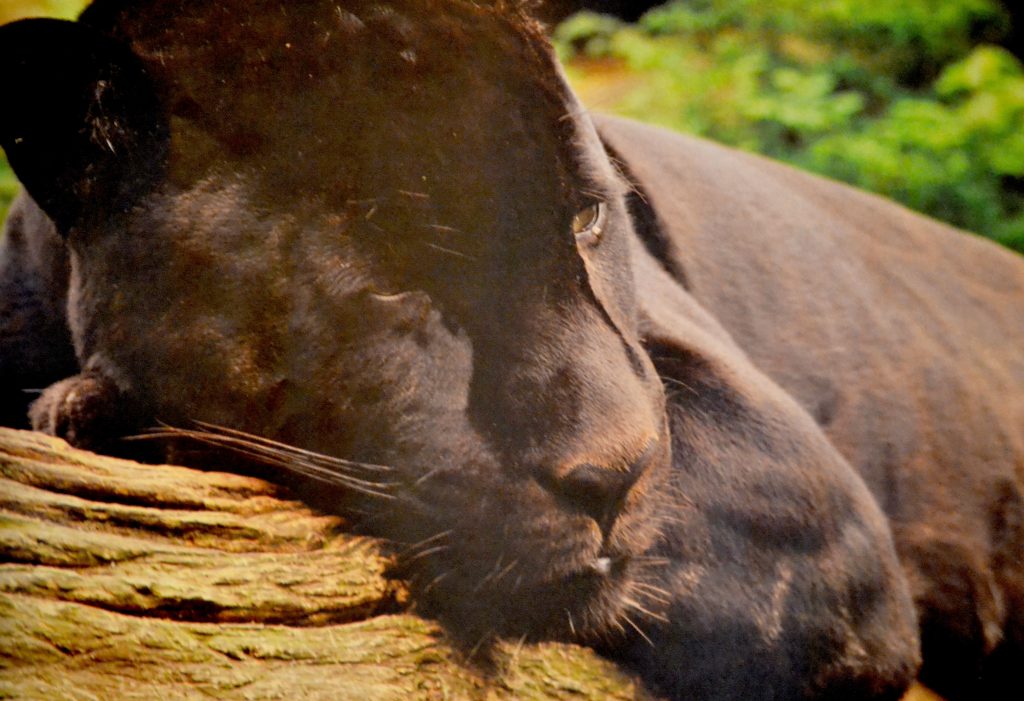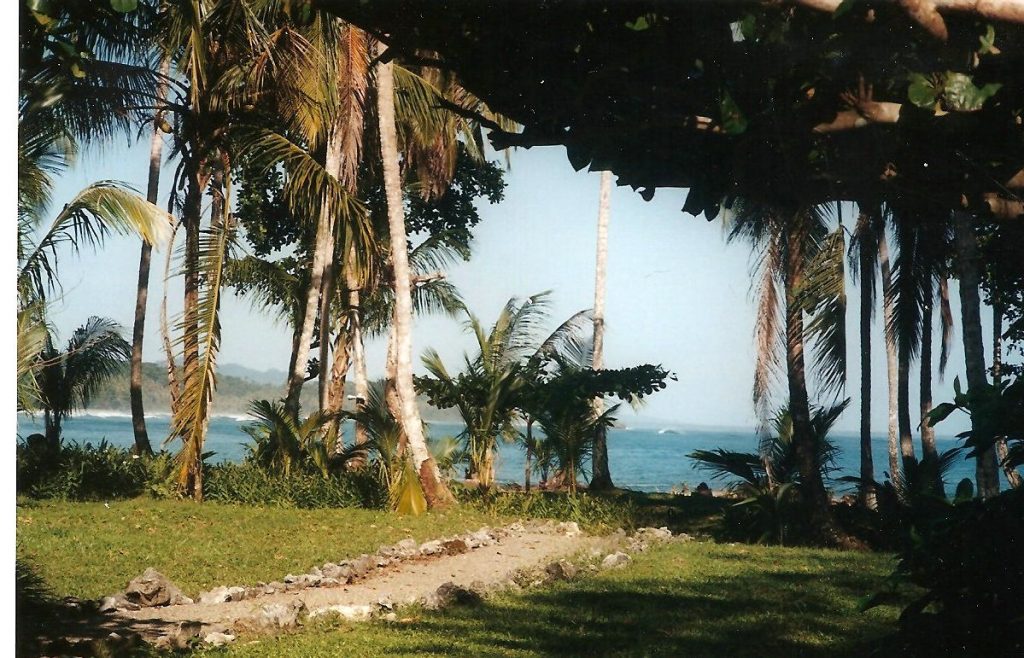
It was another incredible day of surfing and water sports before we packed up our belongings to continue our journey towards Panama. We made one last stop at the bar to thank our bartender and host for the last couple of days and to say good bye to the friendly toucan. We each ordered an Imperial for the road, took a few photos of the spectacular view of the endless coffee fields and confirmed our route for Playa Chiquita.

The Casas del Caribe in Playa Chiquita was perfect for our short stay. Situated on the beach, we could also reach the little town for dinner, shops, grocery and bars. We were interested in visiting the Jaguar Rescue Center for the day and then make a few stops before arriving back to the house in Playa Palo Seco.
Jaguar Rescue Center is located on the beach of Playa Chiquita and we did not have a difficult time finding it. The refuge was founded by Encar Garcia of Spain and the late trained biologist Sandro Alviani. Built as a temporary home for injured and orphaned animals, there were several other native Costa Rican animals such as sloths, monkeys, birds and reptiles that were briefly held here for veterinary care to ensure their health and safety before returning to the wild.

The highlight of my trip was seeing a black jaguar at the center. Also known as panthers, these amazing creatures are nearly extinct due to illegal hunting and habitat loss. Seeing these elusive big cats are rare and are protected in the country’s reserves and national parks.
In addition to the jaguars, we were able to see the ocelots, wooly possums, baby monkeys and a few sloths. I had the opportunity to feed one of the baby sloths. He was such a tiny little guy and so docile.
A baby monkey had just been brought to the rescue during our visit, too small for human interaction. He had been found on the side of the road without its mother and a motorist rescued him and brought him in for medical care. We learned that his survival rate was excellent and that the reserve would keep him under medical surveillance until he was well enough to thrive back in the wild.

We spent a few hours at the reserve, purchased some Imperial, Cacique Guerra and juice before setting up a chairs on the beach. We had a few drinks before dinner and decided to try out another amazing restaurant and nightclub on the beach. We turned in early that night because we had a long drive ahead of us the next day. It was amazing to fall asleep with tunes of Bob Marley in my mind along with the sounds of crashing waves from the beach. It was one of the best night’s sleep I had experienced in a long time.
Have you visited Costa Rica? What was your favorite place and do you have any recommendations for where to spend my next stay in this beautiful country? I would love to hear from you if you would leave a message in the comments section below. Many thanks for reading about my journey through Costa Rica and wishing you many Happy Travels!
What to See and What to Do:
Jaguar Rescue Center
In front of Villas del Caribe
Punta Coclas
41001, Costa Rica
Telephone: 506 2750 0710
Where to Stay:
Casas del Caribe
Oficinas Caribe Sur Limon
Playa Chiquita
70403, Costa Rica
Telephone: 506 8976 7543
Where to Eat:
Paradise 2.0 Beach Hub
25 meters al norte y 100 mts.
al oeste del Supermarcdo El Duende Gourmet
Playa Chiquita Limon Province, Puerto Viejo de Talamanca
70403, Costa Rica
Telephone: 506 2750 0544
What to Eat:
- Arroz con Leche is translated to rice with milk and is a popular dessert in Costa Rica. Additional ingredients include milk, cinnamon, salt and lemon zest, making this a delicious end to your meal.
- Casado, which means marriage which is an interesting combination of meat such as beef, pork, chicken and fish as well as rice, beans, tortillas, fried platano maduro and salad. In addition, the dish also includes a fruit juice.
- Ceviche is raw fish that has been “cooked” with citrus juices.
Gallo Pinto is a mixture of rice and beans with red bell peppers, onions, cilantro and other spices. The secret ingredient is the Salsa Lizano. It is a popular breakfast dish. - Sopra Negra is translated to black soup, which is the base of this delicious soup. Included with the black beans, there are onions, peppers, tomatoes, soft boiled eggs and spicy spices.
- Tamales are similar to their Mexican cousin, but there are some differences, one of which is the wrapping. In Costa Rica, tamales are wrapped in banana leaves rather than corn husks.
What to Drink:
- Agua Dolce (sweet water): which is sweetened with cane sugar
- Cerveza (Beer): Imperial
- Guaro: sugar cane liquor which sneaks up on you. Cacique is the most poular brand.
What to Read:
- It’s Every Monkey for Themselves: A True Story of Sex, Love and Lies in the Jungle by Vanessa Woods
- Oro by Cizia Zyke
- Green Phoenix: Restoring the Tropical Forests of Guanacaste, by William Allen
- Monkeys are Made of Chocolate: Exotic and Unseen Costa Rica, by Jack Ewing
- Costa Rica: A Traveler’s Literary Companion by Barbara Ras, Oscar Arias
- The Year of Fog, by Michelle Richmond
Photo Guide for Costa Rica:
- Manuel Antonio National Park for wild animals such as sloths and monkeys
- Tortuguero National Park for amazing loggerheads and hawksbill
- Poas Volcano National Park for its impressive view of the interior of the volcano